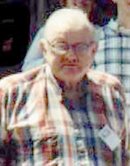The Aether: Defined in Terms of Function, Conceptualized from Known Facts
Year: 1997
Keywords: Ether
Just as with gravity, the ultimate nature and mode of operation of the aether remain a mystery; but also just as with gravity, we can be sure it exists because of what it does. And we can define<\i> the aether in terms of this function<\i>: it is whatever causes light paths in Sagnac-type experiments to remain fixed in the coordinate system of the lab. It may also have other functions, such as transmitting gravitational force, and stimulating molecular motion or heat. In trying to discover the nature of the aether, it seems wise to deal as much as possible with facts we already know. Rather than assuming a substance that transmits waves but whose composition is totally unknown, why not start with particles that we know for sure exist in space, and build our concept of the aether from these? We know space is full of photons, and from Grote Reber's radio astronomy we know they become more abundant as we move toward the low-energy end of the spectrum. In the dense sea of photon or aether particles thus envisioned, clearly no photon can travel far without colliding with other particles. These collisions produce indirect paths, varying in amplitude and length depending on the speed of the emitting source, which is added to that of the photon. This occurs in harmony with Newton's Third Law. Furthermore, the time it takes for a photon to traverse a given segment of aether depends on the density of the aether. This view allows us to explain all evidence, only apparently<\i> inconsistent, for both principal types of alternative theories: (1) additive; and (2) aether-based non-additive.


